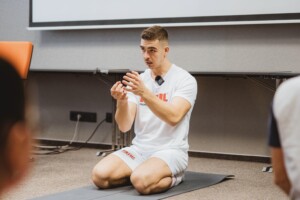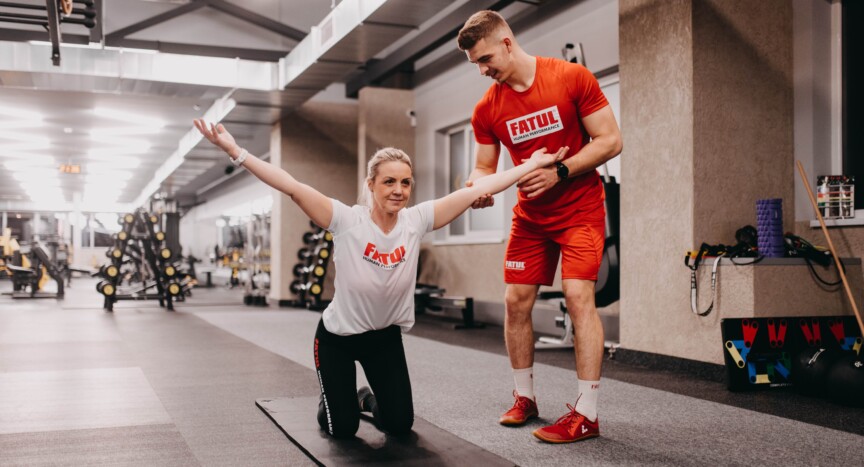Oskar Fatul, an expert in movement therapy, has been working in this field for several years. He teaches people the correct way to move and explains how to properly work with our bodies. Also, he wrote the book “Life Without Pain Begins Here,” which is particularly suitable for parents with young children, as it helps optimize the positions their children adopt during development, whether they are resting positions or those involving movement. He is also the author of a digital rehabilitation course, through which one can obtain all the guidelines for treating various body pains.
Oskar, what is the difference between physiotherapy and movement therapy?
With a general physiotherapist, we essentially have the same goal. We try to help people eliminate pain and feel better. The average physiotherapist today focuses on which muscles are active, which muscles are weakened, and tries to manage the acute pain condition. For example, if you experience a sudden sharp pain or if pain suddenly starts shooting in various parts of your body.

Oskar Fatul
Movement therapy is based on improving the patient’s posture and changing habits and movement patterns to eliminate accumulated tension and pressure in the body. As for the movement therapist, I strive to show people in the Czech Republic and Slovakia how to optimize the way they move, which helps them eliminate the causes of their pain.
What types of problems do you treat most frequently?
I most often deal with issues related to the lower back or spine. Specifically, clients frequently have problems with the disc at the bottom of the lower back. Generally, I address problems that patients find unsolvable.
Are your patients only athletes?
Quite the opposite, I primarily focus on the general public, who unfortunately have the least information about proper movement. Even if they do have information, it’s not always entirely accurate. Additionally, due to the lifestyle we lead in today’s society, where we have to sit a lot at work, we encounter various problems, such as posture issues.

Oskar Fatul
What is the difference in treating men and women?
To a large extent, it does not depend on gender but on the acuteness of the problem. However, it is true that women more often have problems with the thoracic and cervical spine, while men tend to suffer from lower back pain and issues in the lower part of the body.
I also perceive a psychological difference. Women are more open to diagnosing and addressing the problem. They are willing to take care of their bodies and get them back in order. Men test how much pain they can endure and try to tough it out. They come to see me only when they feel very bad.
Women are more open to diagnosing and addressing the problem. Men test how much pain they can endure and try to tough it out.

Oskar Fatul
How can an average person contribute to feeling better through proper movement?
An average person should focus on the positions they put themselves into and pay attention to how they move. It is difficult to know what the right movement for us is, as no one has given us this information. From around the age of six, we sit at desks and, practically, continue sitting for the rest of our lives.
In general, I usually recommend the following:
- When walking, point your feet forward. This will relieve your knees.
- Many people have their pelvis pushed forward and remain bent at the lower back. Shift your hip joints back so they are directly above your ankles.
- Breathe with your chest, not your stomach. Breathing into your chest will open up and stretch your body nicely.
What to avoid:
- Do not stay in one static position for too long.
- Regularly move your spine and joints.
- If you are stiff, do not react abruptly.
- Not every movement is healthy; only the correct movement is healthy.

Oskar Fatul
The article was written by Lea Kovalská.







